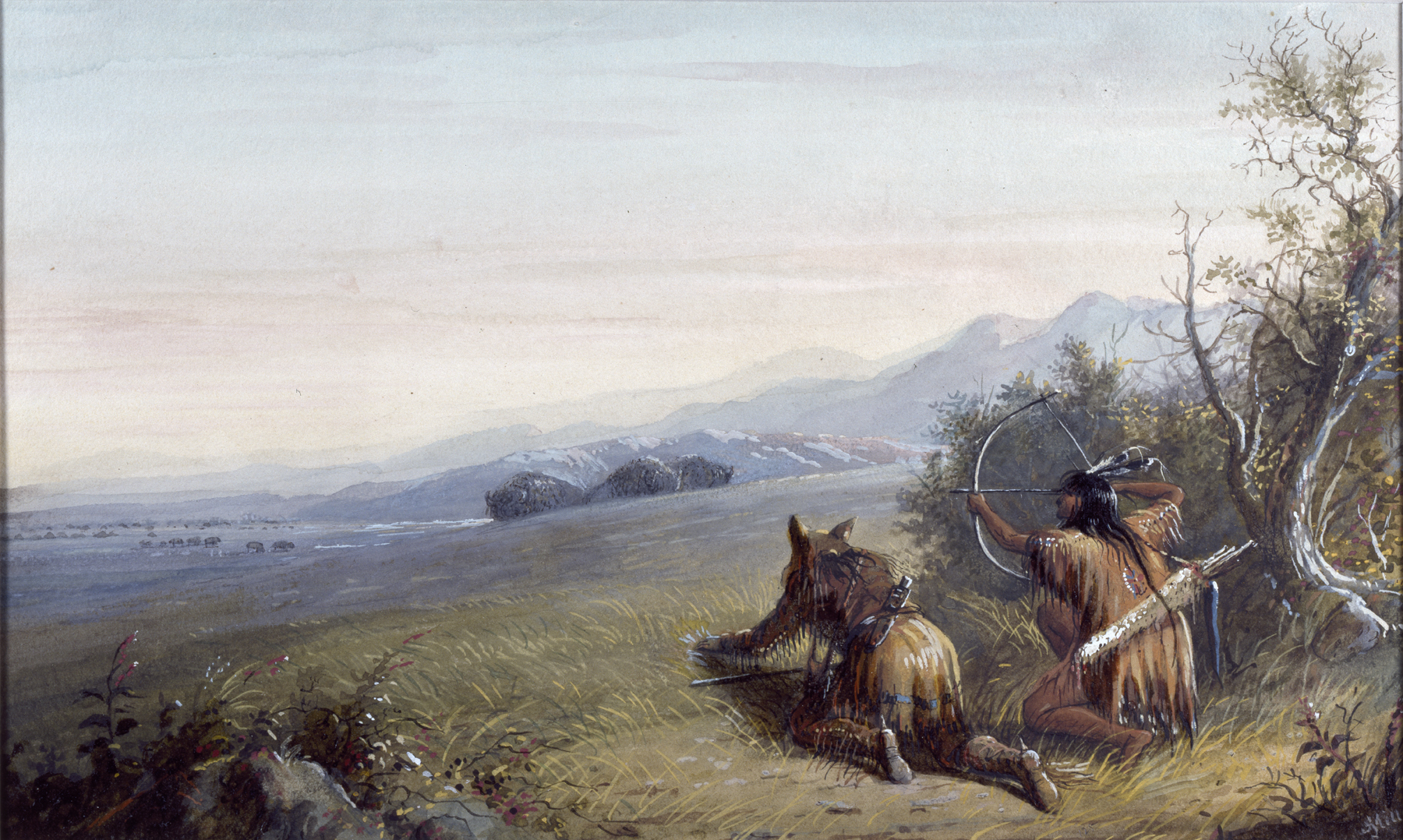Approaching Buffalo
(18th and 19th Centuries )
Extracts from Alfred Jacob Miller’s original text, which accompanied his images of Native Americans, are included below for reference. These words, which shaped how Miller’s contemporaries viewed the watercolors, reveal the racism and sexism embedded in 19th-century exploration and colonization of the western part of what is today the United States.
"The hunters form for themselves a peculiar kind of a cap;- it has two ears with a flap reaching to the shoulders, This is worn with a double object in view, one of which is to deceive the Buffalo in approaching,- under such guise, the hunter is mistaken by the animal for a wolf, and is suffering to approach quite near. The mass of hair covering the forehead of the Buffalo obscures his sight and aids the trapper in his deception. In the sketch a couple of Bulls are lying down near the swell of a rolling prairie. A trapper ( in company with an Indian) is stealthily creeping along the rise,- as the arrows of the latter make no noise, he is privileged to shoot first, the Trapper reserving his fire until the animals regain their feet, when he instantly 'draws a bead,' using his ramrod to steady his rifle. This mode of hunting is used only under certain circumstances;- running being the favorite method, from its affording more excitement." A.J. Miller, extracted from "The West of Alfred Jacob Miller" (1837).
In July 1858 William T. Walters commissioned 200 watercolors at twelve dollars apiece from Baltimore born artist Alfred Jacob Miller. These paintings were each accompanied by a descriptive text, and were delivered in installments over the next twenty-one months and ultimately were bound in three albums. Transcriptions of field-sketches drawn during the 1837 expedition that Miller had undertaken to the annual fur-trader's rendezvous in the Green River Valley (in what is now western Wyoming), these watercolors are a unique record of the closing years of the western fur trade.
Inscription
Provenance
Provenance (from the French provenir, 'to come from/forth') is the chronology of the ownership, custody, or location of a historical object. Learn more about provenance at the Walters.
William T. Walters, Baltimore, 1858-1860, by commission; Henry Walters, Baltimore, 1894, by inheritance; Walters Art Museum, 1931, by bequest.
Geographies
USA (Place of Origin)
Measurements
H: 7 3/4 x W: 12 3/4 in. (19.7 x 32.4 cm)
Credit Line
Commissioned by William T. Walters, 1858-1860
Location in Museum
Not on view
Accession Number
In libraries, galleries, museums, and archives, an accession number is a unique identifier assigned to each object in the collection.
In libraries, galleries, museums, and archives, an accession number is a unique identifier assigned to each object in the collection.
37.1940.106





